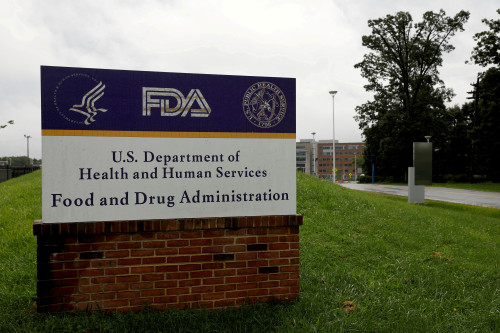By Leah Douglas and Tom Polansek
(Reuters) – Recent actions by President Donald Trump’s administration, including staff cuts at the Food and Drug Administration, have raised questions among consumers about food safety in the United States.
Here is an explanation of how food safety inspection works in the U.S., and how Trump administration cuts to some health and safety programs are reshaping those efforts.
HOW DOES FOOD SAFETY WORK?
The FDA regulates the safety of 80% of the nation’s food supply, ranging from baby formula to leafy greens and food additives. The U.S. Department of Agriculture regulates the rest, focusing on animal products like meat and eggs.
The safety of the U.S. food supply is largely ensured by the people who produce it and companies that process it, according to experts who spoke to Reuters. Meat companies must have USDA inspectors in slaughter plants, and food manufacturers also conduct inspections to check that their products are safe.
Federal inspectors at the FDA perform periodic checks of food facilities and are also responsible, with state regulators and the Centers for Disease Control and Prevention, for investigating outbreaks of foodborne illness.
WHAT HAPPENS IF THERE IS A FOODBORNE ILLNESS OUTBREAK?
It can all start with a stomachache or other symptoms that signal something is off. An individual may tough out their illness at home, but if they visit a doctor or hospital, their medical providers may collect samples to assess whether they have been infected with a pathogen from food.
Food can be contaminated in several ways. Fresh lettuce grown in fields can come in contact with manure from nearby livestock. Undercooked hamburger meat can contain bacteria. Materials such as plastic or wood can contaminate food items in factories. And allergens can be missing from product labels.
State health agencies may notice several reports of illness on surveillance systems and launch an investigation. They may also involve the CDC, which can monitor whether other states are seeing cases of foodborne illness. The CDC can coordinate with affected states to help determine the origin of the outbreak.
Companies are rarely criminally charged for outbreaks, but the risk of reputational damage encourages them to maintain high standards, said Donald Schaffner, a food science professor at Rutgers University.
And companies running afoul may face fewer consequences. A Justice Department unit that handles criminal and civil enforcement of U.S. food and drug safety laws was disbanded as part of the Trump administration’s cost-cutting campaign, according to people familiar with the matter.
Disbanding the DOJ’s Consumer Protection Branch removes the legal teeth needed to hold such violators accountable, said Darin Detwiler, an associate teaching professor at Northeastern University who wrote a book about food safety.
“Without prosecutors who specialize in complex food and drug safety law, it becomes far less likely that companies will face meaningful consequences – even in cases involving death and deception,” he said.
CAN STATES HANDLE OUTBREAKS THEMSELVES?
The Trump administration is considering moving routine food safety oversight to state and local authorities, according to media reports.
That change would not necessarily mean that food would become less safe because processors shipping food to multiple states would still need to adhere to those states’ food safety standards, Schaffner said.
But states vary in how much money and staff they assign to food safety epidemiology, so there could be a patchwork response to illness outbreaks, experts said.
Only federal agencies can establish and enforce nationwide food safety standards; coordinate interstate recalls and investigate multistate outbreaks; and operate surveillance networks that detect emerging threats across jurisdictions, said Detwiler.
“The loss of experienced staff at FDA and USDA directly undermines our ability to prevent, detect and respond to foodborne threats,” he said.
WHAT FOOD SAFETY CUTS HAS THE TRUMP ADMINISTRATION MADE?
The Department of Health and Human Services, which contains the CDC and FDA, has lost about 20,000 employees due to Trump administration cuts.
Those cuts have caused the suspension of several FDA food safety assurance programs, including quality-control programs for Grade A milk and vegetables like spinach, and a program to improve the agency’s testing of aged cheese and pet food for bird flu.
The FDA on May 6 rescinded the terminations of some staff working on food safety, according to a source familiar with the situation.
The USDA also cut two food safety advisory committees and withdrew a proposed rule aimed at reducing the risk of Salmonella contamination in poultry.
The full impacts from those cuts have yet to be seen, experts said.
“It’s not like the wheels have fallen off the bus, but all the nuts are off and the bus is going downhill,” Schaffner said.
IS MY MILK SAFE TO DRINK AND FOOD OK TO EAT?
There has been no indication that food safety standards for milk have fallen as a result of Trump administration cuts.
The milk sector has sophisticated state-level inspection and regulation that maintains high standards, said Nicole Martin, assistant research professor and director of the Milk Quality Improvement Program at Cornell University.
But those extra safeguards do not exist for every food item, and federal regulators are key for providing national assurance of food quality, Martin said.
“I worry about less oversight at the FDA level for food safety issues in general,” Martin said.
In Utah, FDA staff are no longer traveling to the state to audit local inspectors who ensure that food manufacturing facilities are clean and properly training employees, said Travis Waller, a division director for the Utah Department of Agriculture and Food.
The FDA did not immediately respond to a request for comment.
“It definitely slows us down in our progress to meet FDA standards for conducting food facility inspections,” Waller said.
(Reporting by Leah Douglas in Washington and Tom Polansek in Chicago; Editing by Matthew Lewis)



